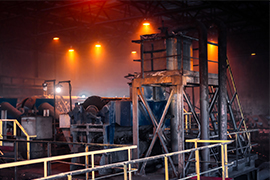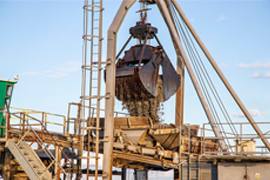What is the Effect of a 2% Improvement of Scraper Efficiency on Overall Carry Back Spillage?
Efficiency of the conveyor belt parts scraper will determine how much material will be there on the floor below the belt conveyor parts and functions. As the material is discharged into the chute, a layer of material sticks to the return side of the belt, known as the carryback material. During the return journey of the conveyor belt parts, the carryback material tends to drop onto the floor as it passes over the return idlers. This results in the carryback spillage. A belt scraper is used to scrape off the material from the return side of the belt and put it into the chute. A 100% efficient scraper will scrape off all the material, and one will have no carryback spillage on the floor. However, for all practical purposes, that does not happen. There are various generations of scrapers available in the market where the average efficiency can vary from 60% to 95%.
Many times, enough importance is not given to the efficiency of conveyor belt parts scrapers. At HOSCH, we audit the belt conveyor parts and functions & use suitable products to maximize the efficiency of the belt scraper for a particular application. Let us understand what a difference 2% more efficient scraper can make in your conveyor belt parts system.
Let us consider a power plant having 50 conveyors. The conveyors are handling coal. It operates 16 hours a day & 250 days a year.
Belt Width – 1400 mm
Belt Speed – 3 m/sec
Carryback Thickness – 1 mm
Material generally sticks to only 75% of the conveyor belt parts. Therefore, the total carryback material is 11.34 m3/hr. It has been found that at least one-third material will drop onto the floor. Therefore, the amount of material that will drop on the floor is 3.78 m3/hr. This is a very conservative estimate, and in most cases, the amount of material that will drop onto the floor is much higher. Considering 16 hours of operation per day for 250 days a year, the amount of carryback material that will be on the floor will be 755244 m3. This translates to 679720 tons of coal on the floor (Bulk density of coal considered is 0.9 tons/m3). A 2% lower efficient scraper will leave 13594 tons of additional material on the floor. Manually, a worker can clean around 1 ton of material in a shift. This will require 13594 man-shifts, which translates to an additional cleaning manpower cost of 8.1mn INR per year. The above cost only includes additional cleaning manpower cost & does not include the effect of additional carryback on the life of the idlers, rollers, pulleys & conveyor belt parts structures.
.jpg?v=1)


